Samsung Odyssey G8 OLED G80SD review: this 4K OLED monitor thinks it's a TV
Samsung Odyssey G8 OLED G80SD: one-minute review
Gaming monitors that have taken inspiration from Samsung's 32-inch 4K QD-OLED display have been around for a little while. But this is Samsung's own take, the Samsung Odyssey G8 OLED G80SD. In theory, that should make it the ultimate example of the breed and a nailed-on certainty to top the tables among the best gaming monitors in 2024, right?
It certainly all bodes well. You get Samsung's stunning QD-OLED panel tech combined with crispy 4K resolution and high pixel density, plus a 240Hz refresh. More to the point, this is Samsung using its own QD-OLED panel. In other words, you'd think Samsung knows how to get the best out of it.
Of course, it's far from cheap and hardly looks like good value compared to a much larger 4K OLED TV for about the same money. Speaking of which, it just so happens that TV-style functionality might just be this monitor's greatest flaw. Hold that thought.
Samsung Odyssey G8 OLED G80SD: price and availability
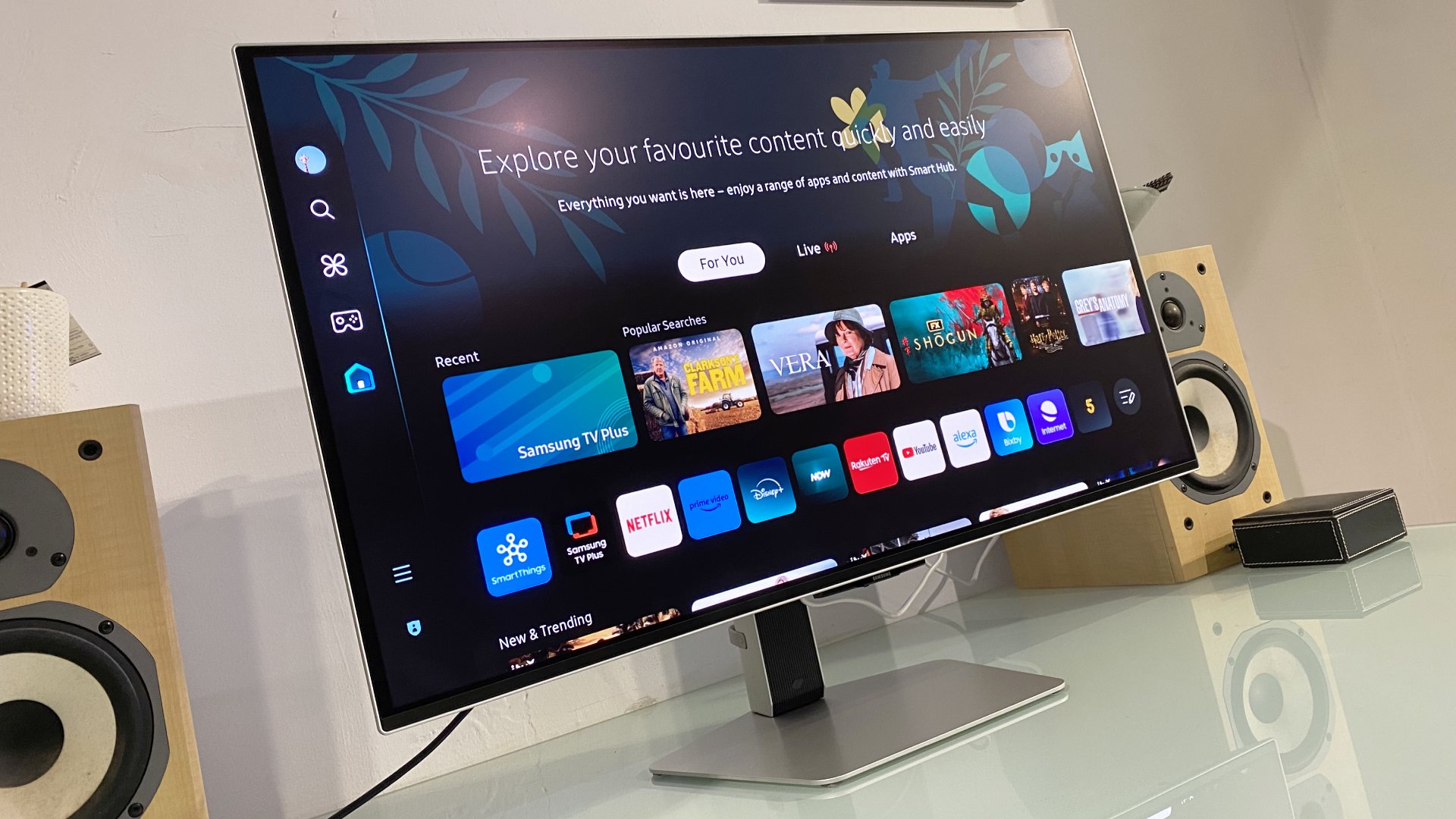
- How much does it cost? $1,299 / £1,099 / AU$1,999
- When is it available? Available now
- Where can you get it? Available in the US, UK, and Australia
No 32-inch 4K OLED monitor is cheap. But the Samsung Odyssey G8 OLED G80SD is still one of the most expensive of this new breed. By way of example, the MSI MPG 321URX can be had for $899, albeit that's such an attractive price it's usually sold out.
There are various other monitors using essentially the same QD-OLED panel from brands like Gigabyte and Alienware that are between $100 and $200 cheaper. That's problematic given this Samsung option is not without its flaws. On a pure value basis, it's hard to recommend.
Samsung Odyssey G8 OLED G80SD: design
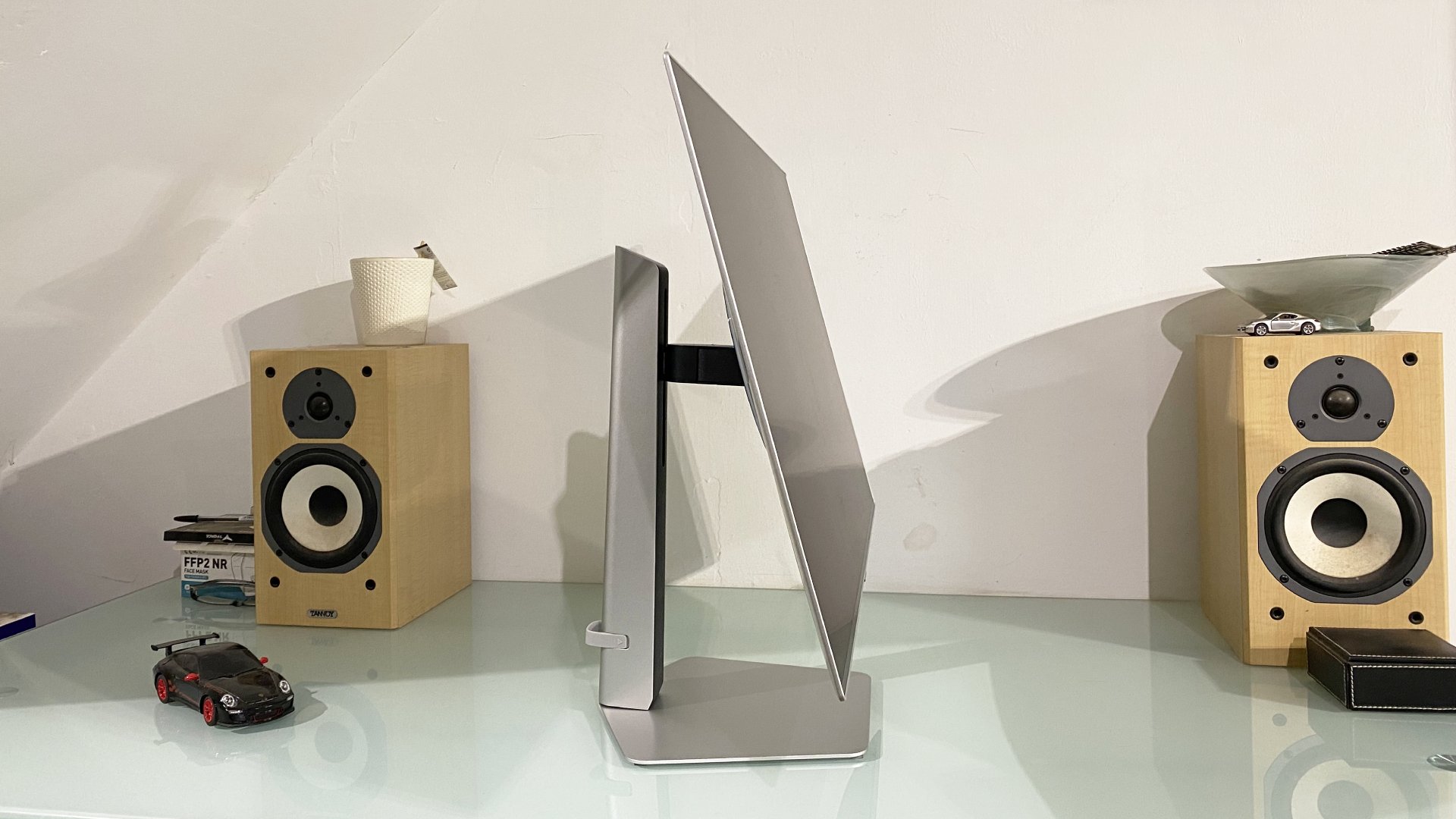
Screen size: 32-inch
Resolution: 3,840 x 2,160
Brightness: 250 nits full screen, 1,000 nits max HDR
Color coverage: 99% DCI-P3
Response time: 0.03ms
Refresh rate: 240Hz
HDR: HDR10
Features: Samsung QD-OLED 3rd Gen panel, Adaptive Sync, 1x DisplayPort 1.4, 2x HDMI 2.1, SmartTV, phase-change cooling
No question, if it's a gaming monitor with a mature, upmarket vibe you're after, look no further than the Samsung Odyssey G8 OLED G80SD. It's got the same premium design language as other Samsung Odyssey OLED monitors. Put simply, it looks and feels grown up and expensive in a way that most, if not all, of the competition simply doesn't.
With slim and symmetrical bezels on all four sides of the 32-inch QD-OLED panel, it's sleek and modern, too. You do get some programmable RGB lighting on the rear, which is a subtle nod to the monitor's gaming remit. But for the most part, Samsung has sidestepped the usual adolescent gamer design cues in favor of a more mature look.
- Design: 5 / 5
Samsung Odyssey G8 OLED G80SD: features
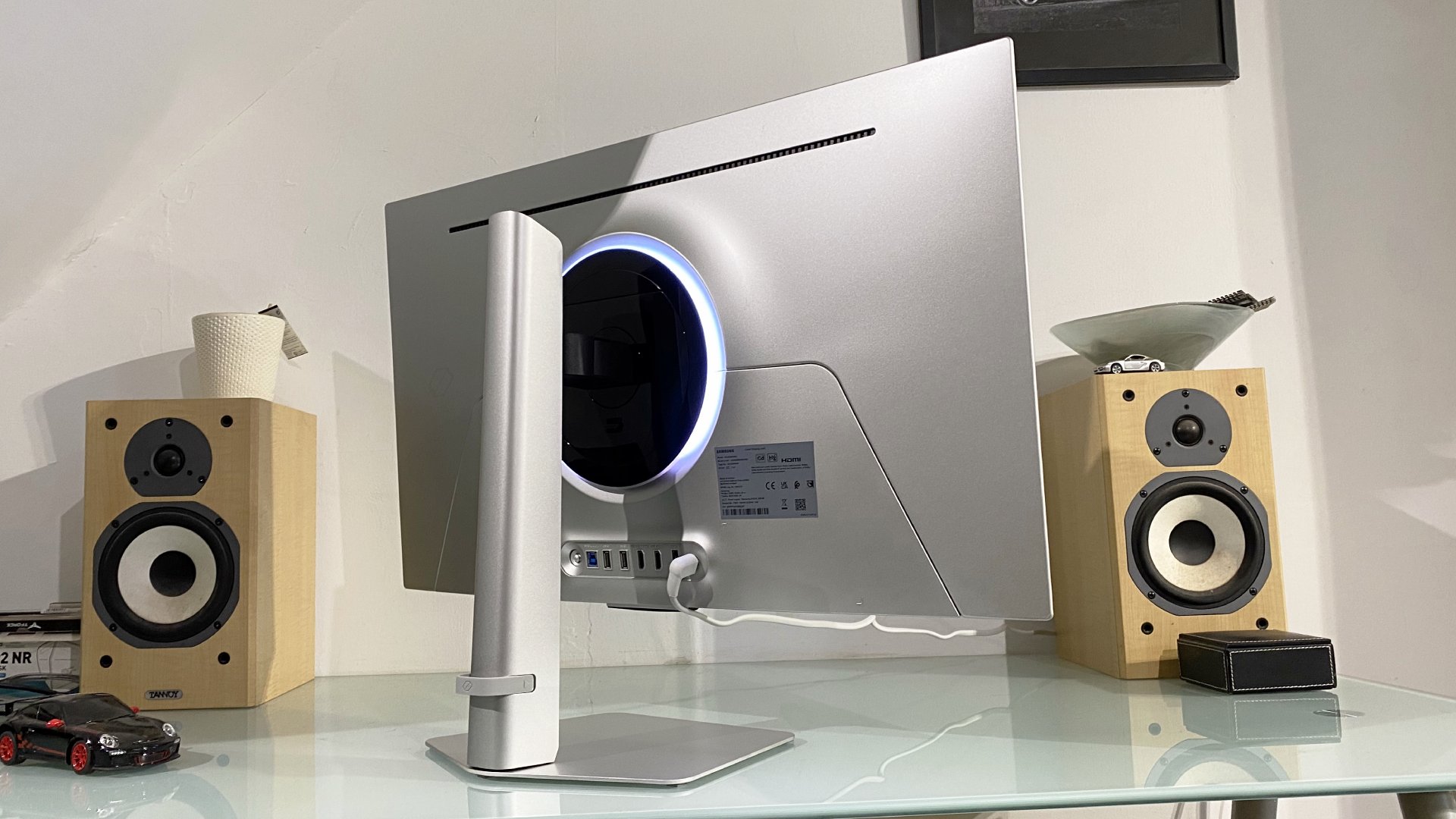
Up front and center is the 32-inch QD-OLED panel. The big attraction is the combination of 4K resolution and therefore pixel density with the speed and HDR performance of OLED. Samsung rates the monitor at 250 nits for full screen brightness, 1,000 nits for peak HDR, plus 0.03ms for response time. Add in the 240Hz refresh rate and you very much have the same recipe as other 32-inch 4K monitors using this QD-OLED panel.
Where the Samsung Odyssey G8 OLED G80SD notably differs is its SmartTV functionality. It's what makes this a "Smart Gaming Monitor" in Samsung terms, and it's a bit of a mixed bag. The positives involve the full Samsung SmartTV platform complete with a NQ8 AI Gen3 processor for video upscaling and motion enhancement.
So, assuming you watch your TV over IP rather than using a tuner, then this monitor effectively has full TV functionality with support for all the major streaming apps. The problem is that this functionality has been put up front and center to the extent that the Samsung Odyssey G8 OLED G80SD ends up feeling like a very small and expensive 32-inch TV.
The on-screen display (OSD) interface kicks you back into the "Smart" functionality at every opportunity. Indeed, there's a certain amount of SmartTV setup you have to go through to even use the monitor as, well, a monitor. The OSD in general also has quite a steep learning curve. It's not nearly as straightforward to access the DisplayPort and HDMI inputs as it should be, and there are multiple and overlapping menus that make adjusting some settings absolutely baffling.
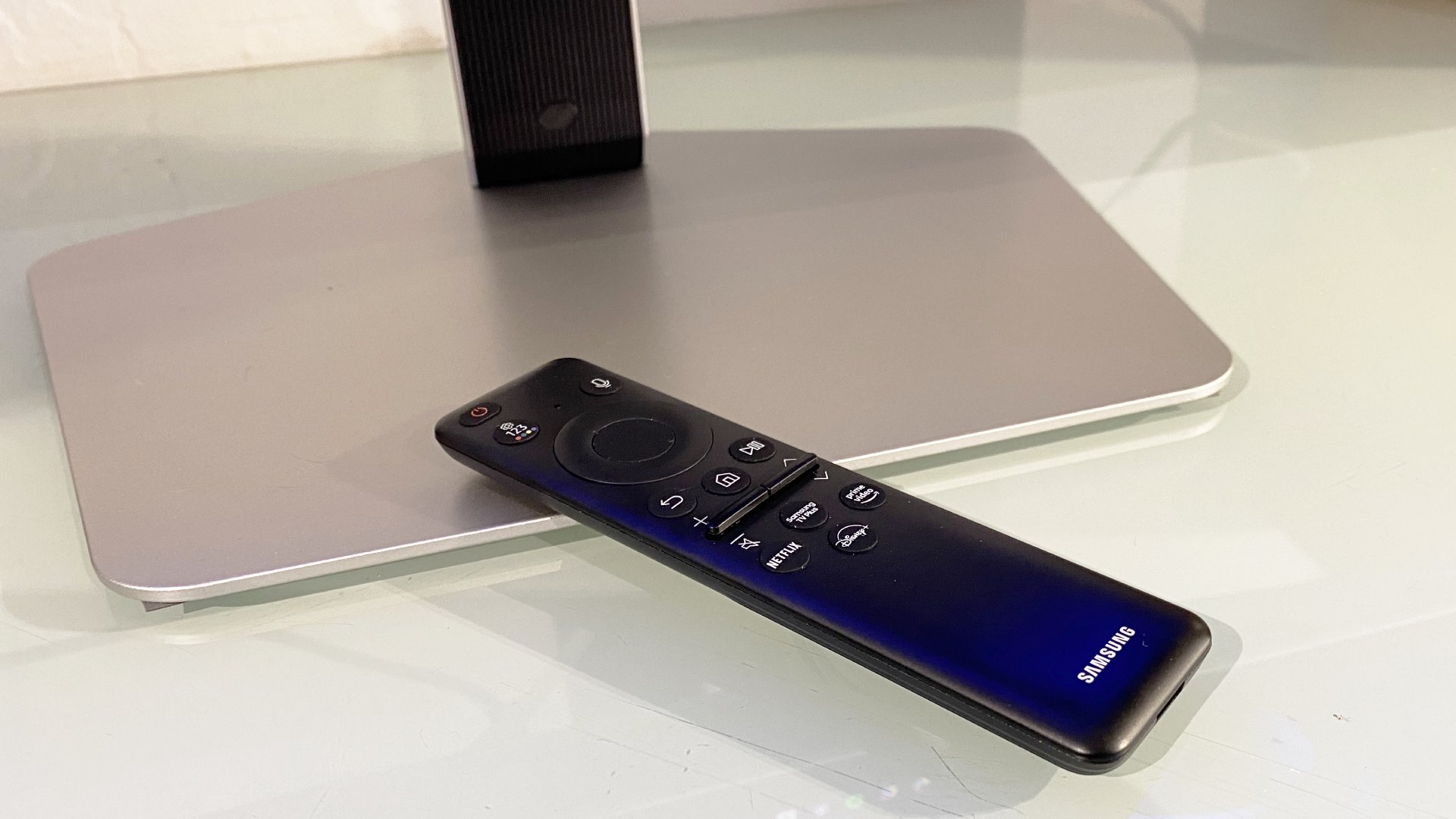
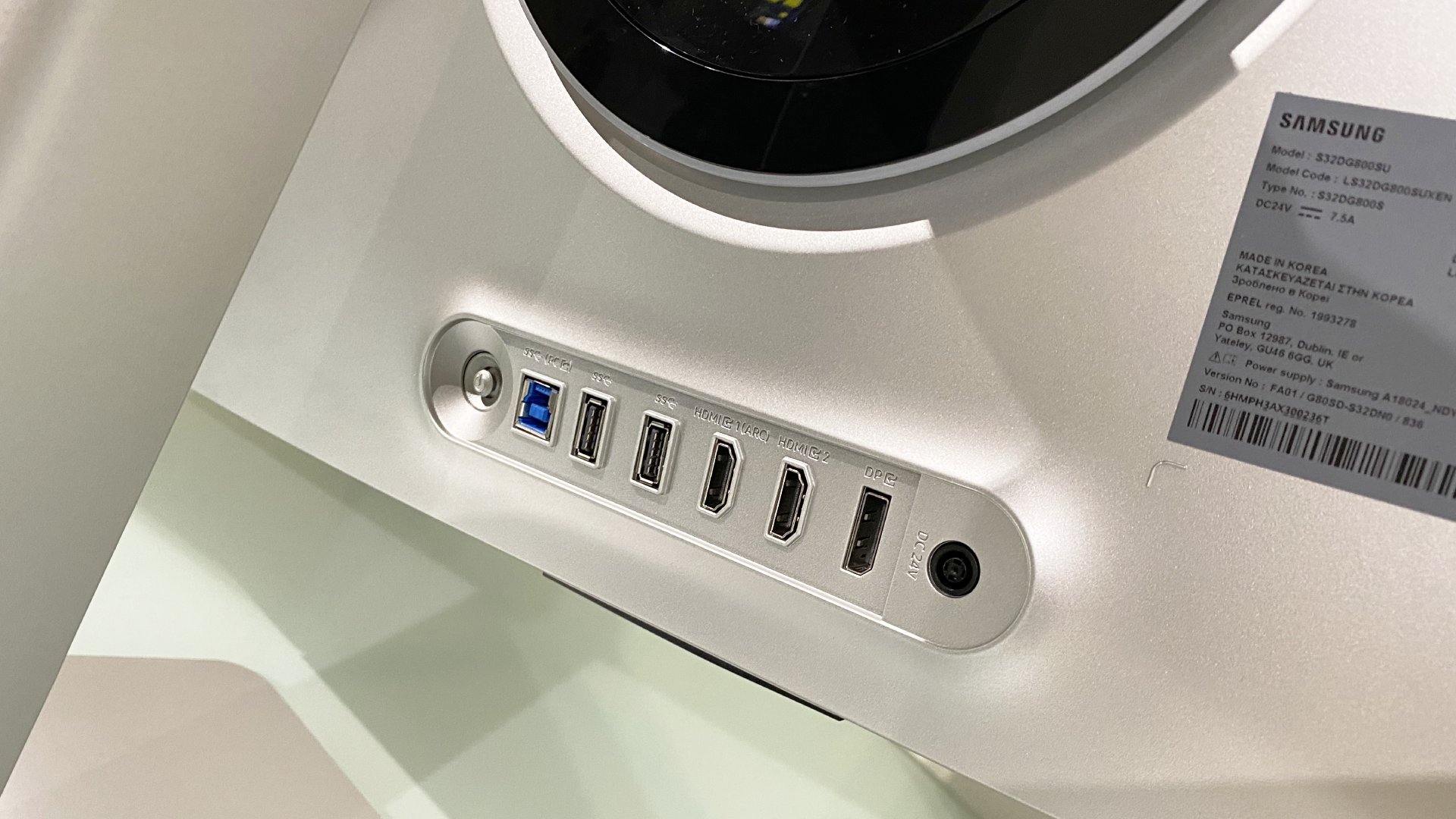
Obviously all of this is something you'd learn to navigate eventually. And the bundled IR remote control does help with accessing some features. But it really shouldn't be this hard or this confusing. It's also a pity because SmartTV would be a welcome extra feature if done right. As it is, it feels like a nuisance if what you mainly want to do, again, is use this monitor as a monitor.
Elsewhere, Samsung has implemented a phase change cooling system for the panel known as Pulsating Heat Pipe, which bodes well for both brightness and panel durability. Speaking of which, Samsung has also implemented various burn-in mitigation features, including logo and taskbar detection.
Finally, along with DisplayPort and HDMI connectivity, there's also USB-C with 90W of power delivery, enabling single-cable functionality with a laptop. So, pretty much all your connectivity needs should be covered.
Samsung Odyssey G8 OLED G80SD: performance
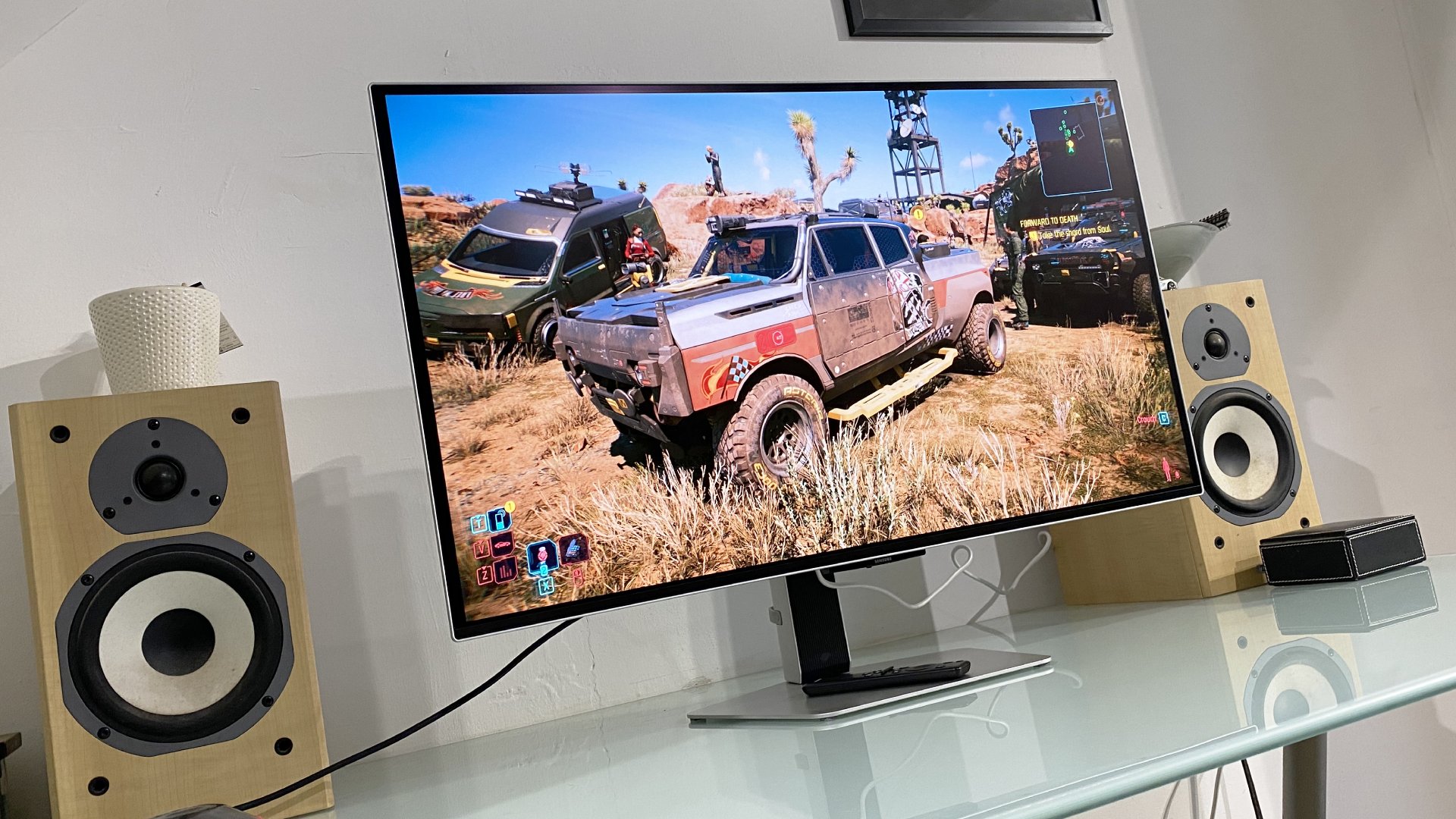
The first thing you'll notice in terms of image quality with the Samsung Odyssey G8 OLED G80SD is that it has a matte anti-glare coating rather than glossy. There are pros and cons to both types of coating, but it's notable that every other monitor based on this QD-OLED 4K panel we are aware of has a glossy finish.
Broadly, glossy coatings maximize contrast, which in turn makes the most of the perfect per-pixel lighting of an OLED screen. The matte panel does detract a little from those characteristically deep and inky blacks. It's also a little odd given that all of Samsung's actual TVs are glossy and Samsung is pitching the SmartTV functionality here. But the matte coating also helps to mitigate the quantum-dot associated greyness these panels can suffer from in strong ambient light.
In the end it's a subjective call. We think glossy coatings really let OLED panels zing. But this is still a mostly stunning monitor. Full-screen brightness is as good as OLED monitor technology currently allows, which means it's about the same as a 250 nit LCD monitor for SDR content. But for HDR games and video, it'll hit 1,000 nits for small highlights. That's some serious sizzle.
The catch is that the calibration in both SDR and HDR modes could be better. Connected to a PC, the SDR colors are oversaturated. The factory default HDR color balance could do with a little tweaking, too. To be clear, this is not a massively wonky monitor in terms of color accuracy. But given the price, you'd be justified in expecting near perfection. And you're not getting that.
That said, you can't argue with the speed. The combination of 240Hz refresh and 0.03ms response makes this a seriously rapid panel. For both latency and pixel response, it's pretty much impeccable. The only catch is that the 4K resolution takes some driving. If you want to hit high frame rates and make the most of that 240Hz refresh at 4K, you're going to need one of the best graphics cards on the market.
- Performance: 4 / 5
Should I buy a Samsung Odyssey G8 OLED G80SD?
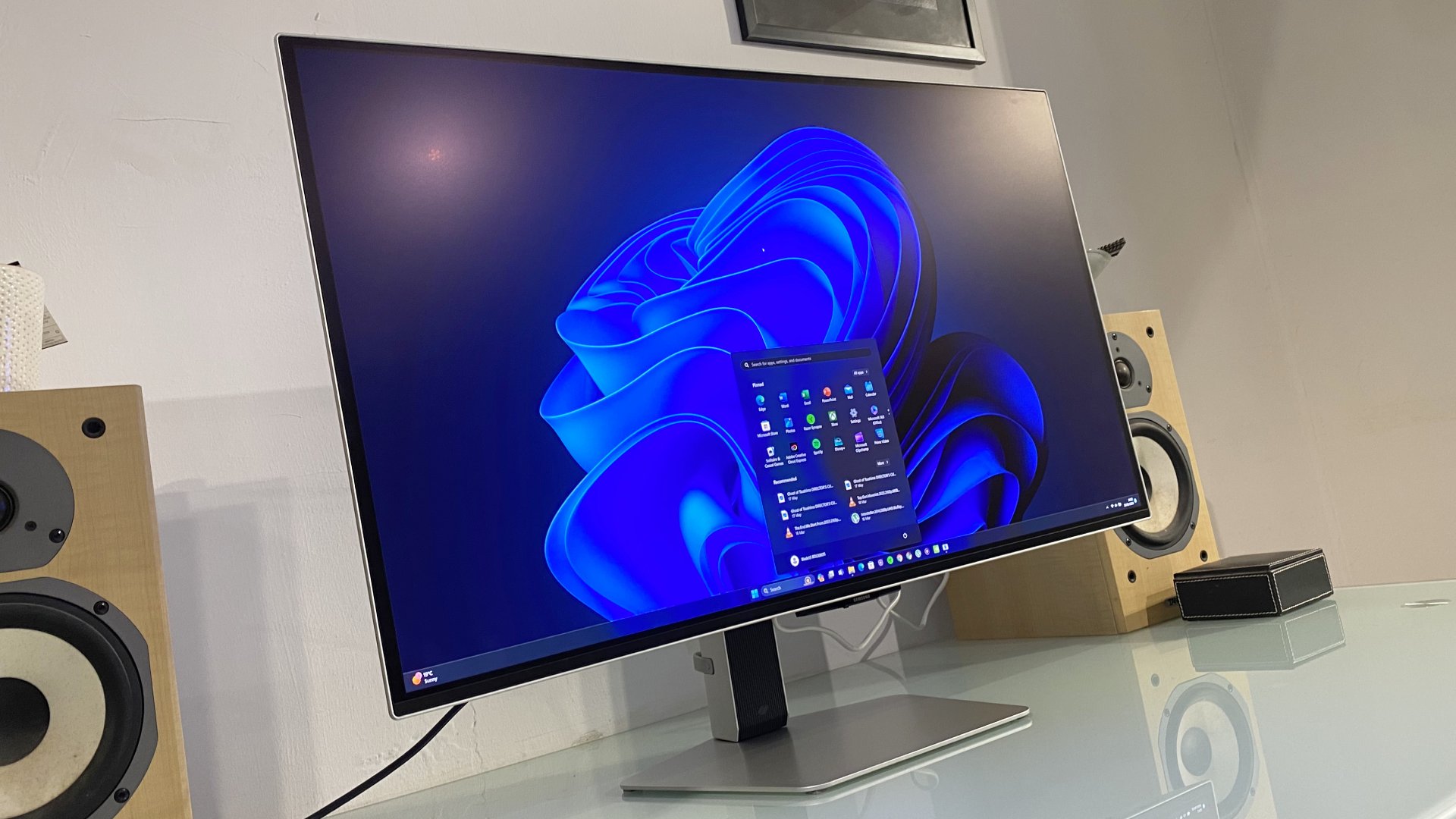
Buy it if...
Don't buy if...
Also Consider
Samsung Odyssey G8 OLED G80SD: Report Card
How I tested the Samsung Odyssey G8 OLED G80SD
I had the Samsung Odyssey G8 OLED G80SD as my primary PC and Mac display for two weeks. That meant everything from daily work duties to watching YouTube and streaming services. Oh and gaming - lots of gaming.
The latter is really what this monitor ought to be about, though with the SmartTV functionality dominating proceedings, it's easy to forget that. Along with my usual suite of test images and apps, I used the Samsung Odyssey G8 OLED G80SD across multiple gaming genres, from shooters to strategy titles.
Most of all, it was intriguing to see how it compared with other 4K OLED monitors. This is the fifth such model I have personally reviewed, so I have a pretty good feel for how they all stack up.
- First reviewed August 2024
0 comments:
Post a Comment